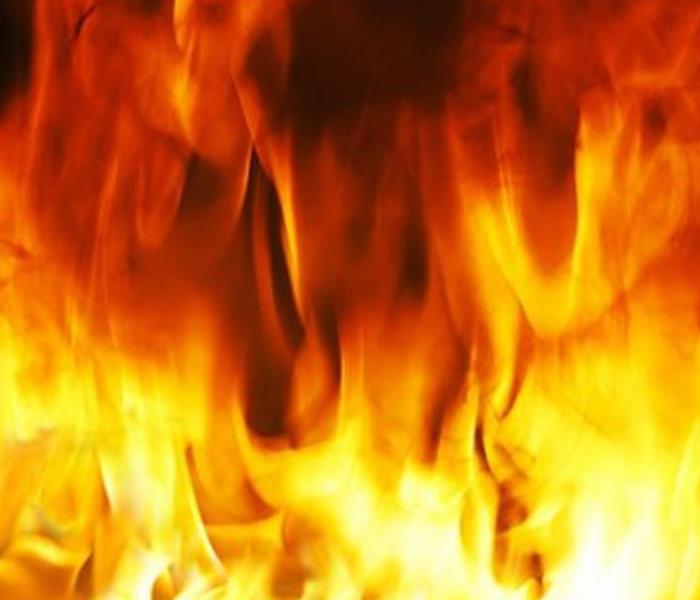Fire Safety Facts & Prevention Tips for the Bay Area
3/8/2019 (Permalink)
FIRE SAFETY FACTS
Each year, more than 4,000 Americans die in fires, more than 25,000 are injured in fires, and more than 100 firefighters are killed while on duty. Eighty three percent of all civilian fire deaths occurred in residences. Many of these fires could have been prevented.
Cooking is the third leading cause of fire deaths and the leading cause of injury among people ages 65 and older.
Direct loss due to fires is estimated at nearly $8.6 billion annually. Intentionally set structure fires resulted in an estimated $664 million in property damage.
In order to protect yourself, it is important to understand the basic characteristics of fire.
Fire is FAST. In just two minutes, a fire can become life-threatening. In five minutes, a residence can be engulfed in flames.
Fire is DARK. Fire produces gases that make you disoriented and drowsy. Instead of being awakened by a fire, you may fall into a deeper sleep. Asphyxiation is the leading cause of fire deaths, exceeding burns by a three- to- one ratio.
Fire is HOT. Heat and smoke from fire can be more dangerous than the flames. Inhaling the super- hot air can sear your lungs.
FIRE PREVENTION TIPS
BEFORE A FIRE
The following are things you can do to protect yourself, your family, and your property in the event of a fire:
SMOKE ALARMS AND CARBON MONOXIDE DETECTORS
Install smoke alarms. Properly working smoke alarms decrease your chances of dying in a fire by half.
Place smoke alarms on every level of your residence, including the basement.
Install a working carbon monoxide detector in the common area of the bedrooms.
Test and clean smoke alarms once a month and replace batteries at least once a year. Replace smoke
alarms once every 10 years.
COOKING SAFETY
Never leave cooking unattended.
Always wear short or tight-fitting sleeves when you cook.
Keep towels, pot holders and curtains away from flames
Never use the range or oven to heat your home.
ESCAPING THE FIRE
• Have an escape plan. Review escape routes with your family.
Make sure windows are not nailed or painted shut.
Teach family members to stay low to the floor, where the air is safer, when escaping from a fire.
In high-rise, never lock fire exits or doorways, halls or stairways. Never prop stairway or other fire
doors open.
HEATING SOURCE
Place space heaters at least three feet away from flammable/combustible materials.
Use only the type of fuel designated for your space heater.
MATCHES/LIGHTERS AND SMOKING
Keep matches/lighters away from children.
Never smoke in bed or when drowsy or medicated.
If you must smoke, do it responsibly.
ELECTRICAL WIRING
Inspect extension cords for frayed or exposed wires or loose plugs
Make sure outlets have cover plates and no exposed wiring.
Make sure wiring does not run under rugs, over nails, or across high traffic areas.
Do not overload extension cords or outlets.
ASK THE FIRE DEPARTMENT TO INSPECT YOUR HOME FOR FIRE SAFETY AND PREVENTION
DURING A FIRE
If your clothes catch on fire, you should:
• Stop, drop, and roll until the fire is extinguished.
DO NOT PANIC
• Do not assume someone else already called the fire department get out of the house then call the Fire Department.
ESCAPE A FIRE
Check closed doors with the back of your hand to feel for heat before you open them.
If the door is hot do not open it. Find a second way out, such as a window. If you cannot escape
through a window, hang a white sheet outside the window to alert firefighters to your presence.
Stuff the cracks around the door with towels, rags, bedding or tape and cover vents to keep smoke
out.
If there is a phone in the room where you are trapped, call the fire department again and tell them
exactly where you are.
If the door is cold slowly open it and ensure that fire and/or smoke is not blocking your escape
route. If your escape route is blocked, shut the door and use another escape route.
• If clear, leave immediately and close the door behind you. Be prepared to crawl.AFTER A FIRE
Once you are out of the building, STAY OUT! Do not go back inside for any reason.
If you are with a burn victim or are a burn victim yourself call 911, cool and cover your burns until
emergency units arrive.
If you are a tenant contact the landlord.
Tell the fire department if you know of anyone trapped in the building.
Only enter when the fire department tells you it is safe to do so.



 24/7 Emergency Service
24/7 Emergency Service
